INTERNATIONAL. The International Air Transport Association (IATA) expects net airline industry losses of US$47.7 billion in 2021 (with a net profit margin of -10.4%), with travel restrictions imposed by governments “killing demand” around the world. The figure is still an improvement on the estimated net industry loss of US$126.4 billion in 2020 (net profit margin of -33.9%).
IATA Director General Willie Walsh said: “This crisis is longer and deeper than anyone could have expected. Losses will be reduced from 2020, but the pain of the crisis increases. There is optimism in domestic markets where aviation’s hallmark resilience is demonstrated by rebounds in markets without internal travel restrictions. Government imposed travel restrictions, however, continue to dampen the strong underlying demand for international travel. Despite an estimated 2.4 billion people travelling by air in 2021, airlines will burn through a further US$81 billion of cash.”
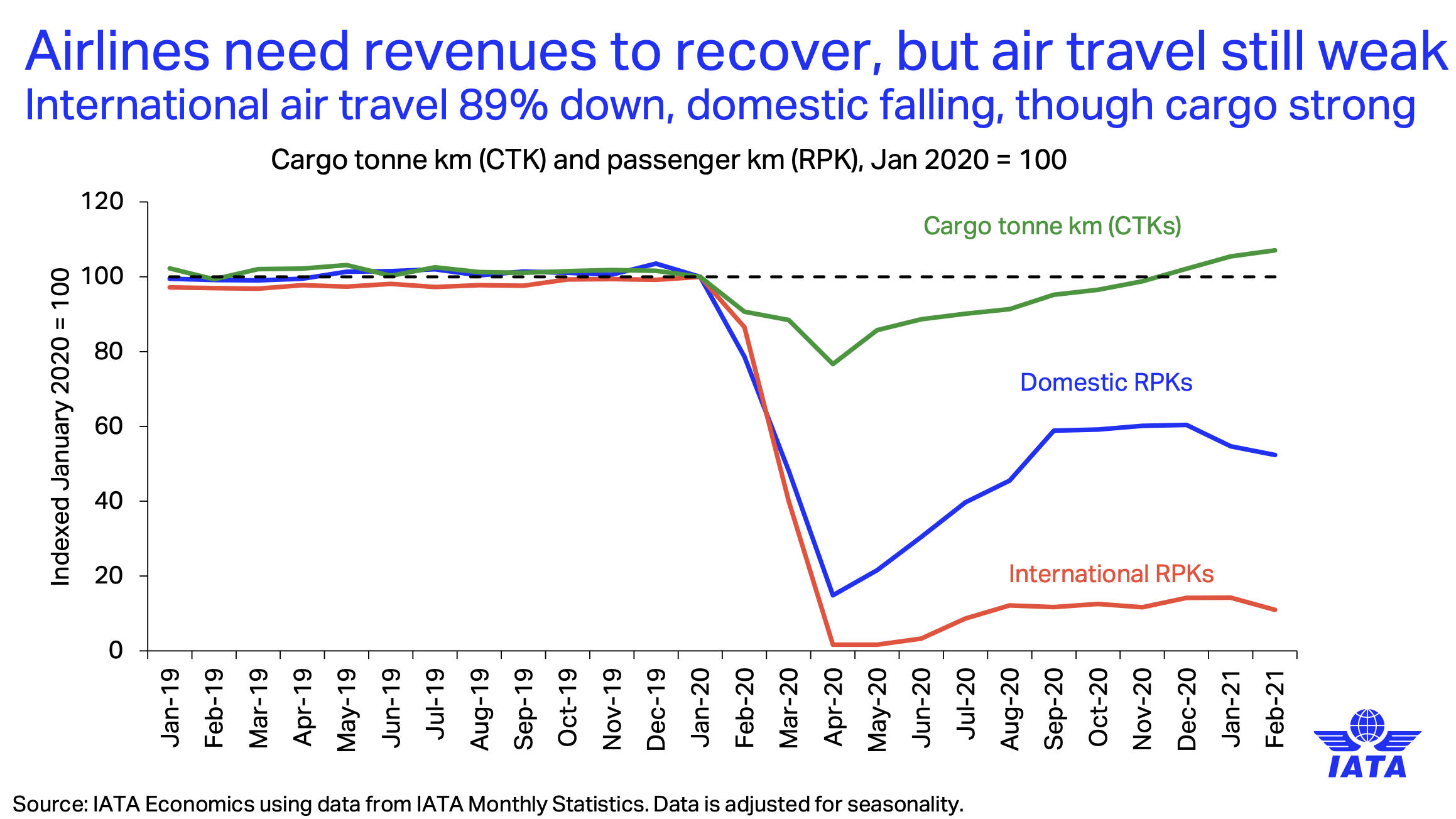
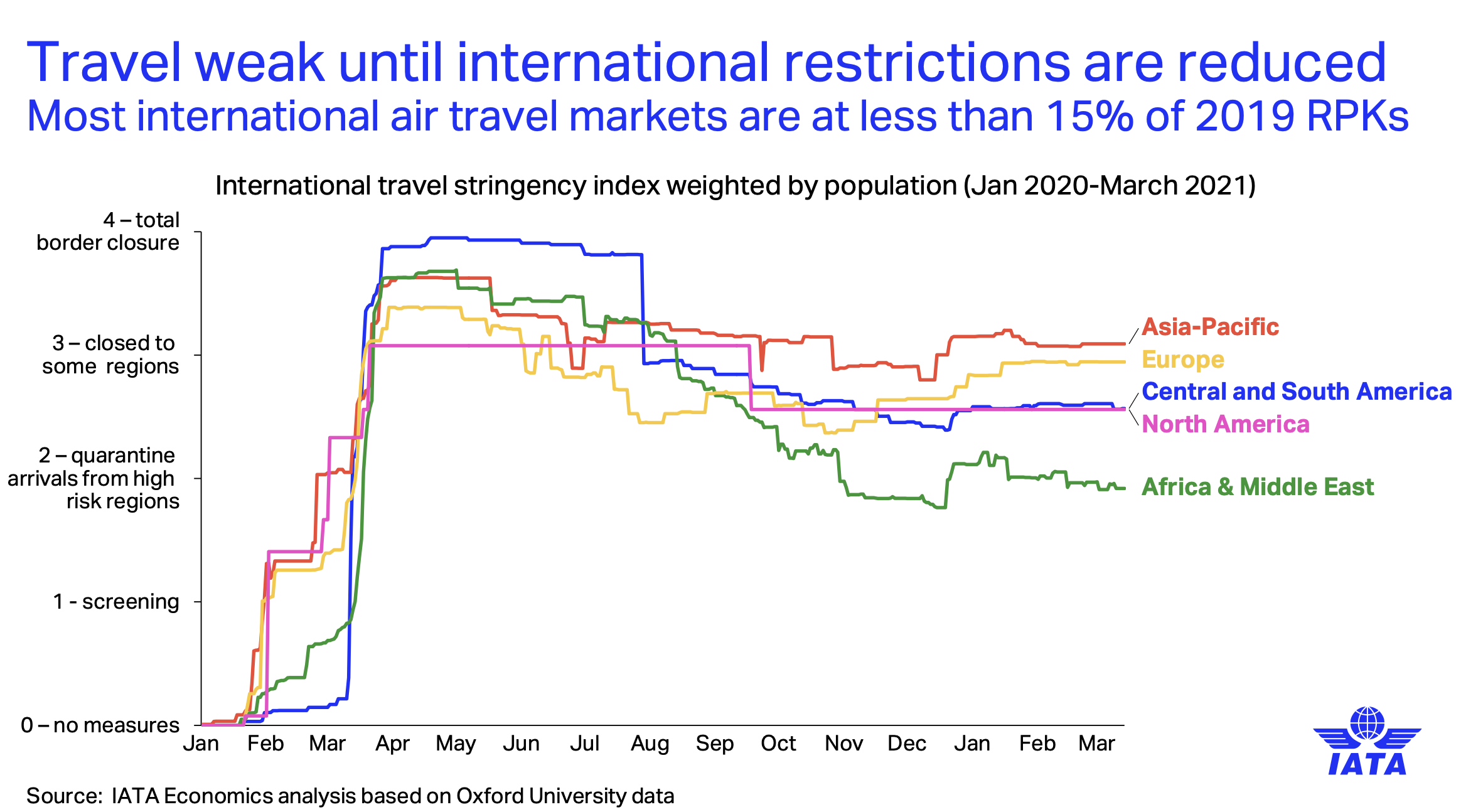 The outlook points to the start of industry recovery in the latter part of 2021. In the face of the ongoing crisis, IATA calls for:
The outlook points to the start of industry recovery in the latter part of 2021. In the face of the ongoing crisis, IATA calls for:
Plans for a restart in preparation for a recovery: IATA continues to urge governments to have plans in place so that no time is lost in restarting the sector when the epidemiological situation allows for a re-opening of borders.
“Most governments have not yet provided clear indications of the benchmarks that they will use to safely give people back their travel freedom. In the meantime, a significant portion of the US$3.5 trillion in GDP and 88 million jobs supported by aviation are at risk. Effectively restarting aviation will energise the travel and tourism sectors and the wider economy. With the virus becoming endemic, learning to safely live, work and travel with it is critical. That means governments must turn their focus to risk management to protect livelihoods as well as lives,” said Walsh.
Employment Support: Industry losses imply a cash burn of US$81 billion in 2021 on top of US$149 billion in 2020. The industry will recover but more government relief measures, particularly in the form of employment support programmes, will be needed this year, said IATA.
“Owing to government relief measures, cost-cutting, and success in accessing capital markets, some airlines appear able to ride out the storm. Others are less well-cushioned and may need to raise more cash from banks or capital markets. This will add to the industry’s debt burden, which has ballooned by US$220 billion to US$651 billion. There is a definite role for governments in providing relief measures that ensure critical employees and skills are retained to successfully restart and rebuild the industry,” said Walsh.
Cost containment/reduction: The industry will come out of the crisis financially weakened, noted IATA.
“Containing and reducing costs will be top of mind for airlines. Governments and partners must have the same mentality. And that must be reflected in items big and small. There can be no tolerance for monopoly infrastructure suppliers gouging their customers to recoup losses through higher charges. Equally, we demand an end to the extortionate costs for COVID-19 testing with governments taking their cut on top of that with taxes. Everyone must be aligned in understanding that increased travel costs will mean a slower economic recovery. Cost reduction efforts on all sides are needed,” said Walsh.
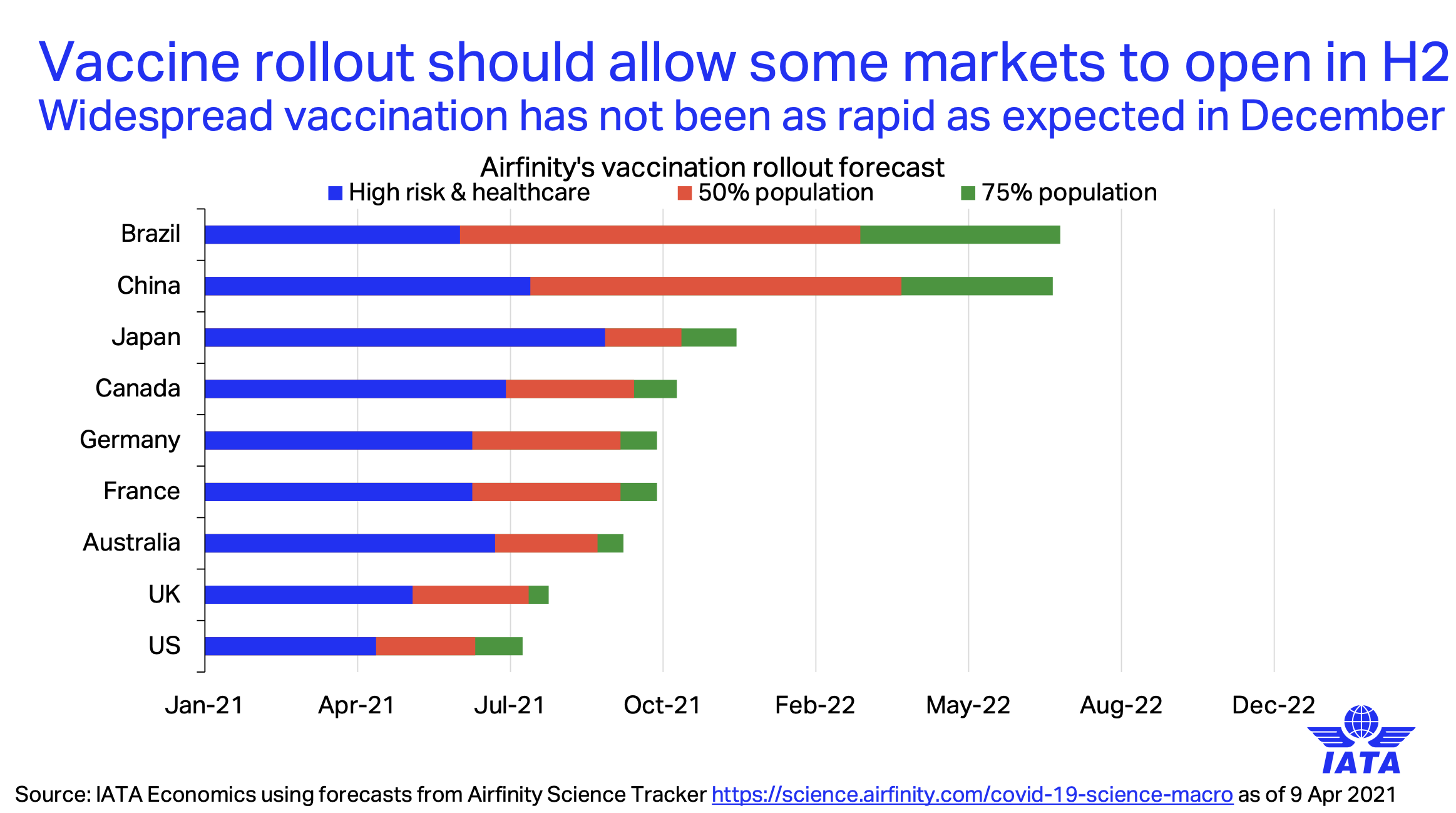
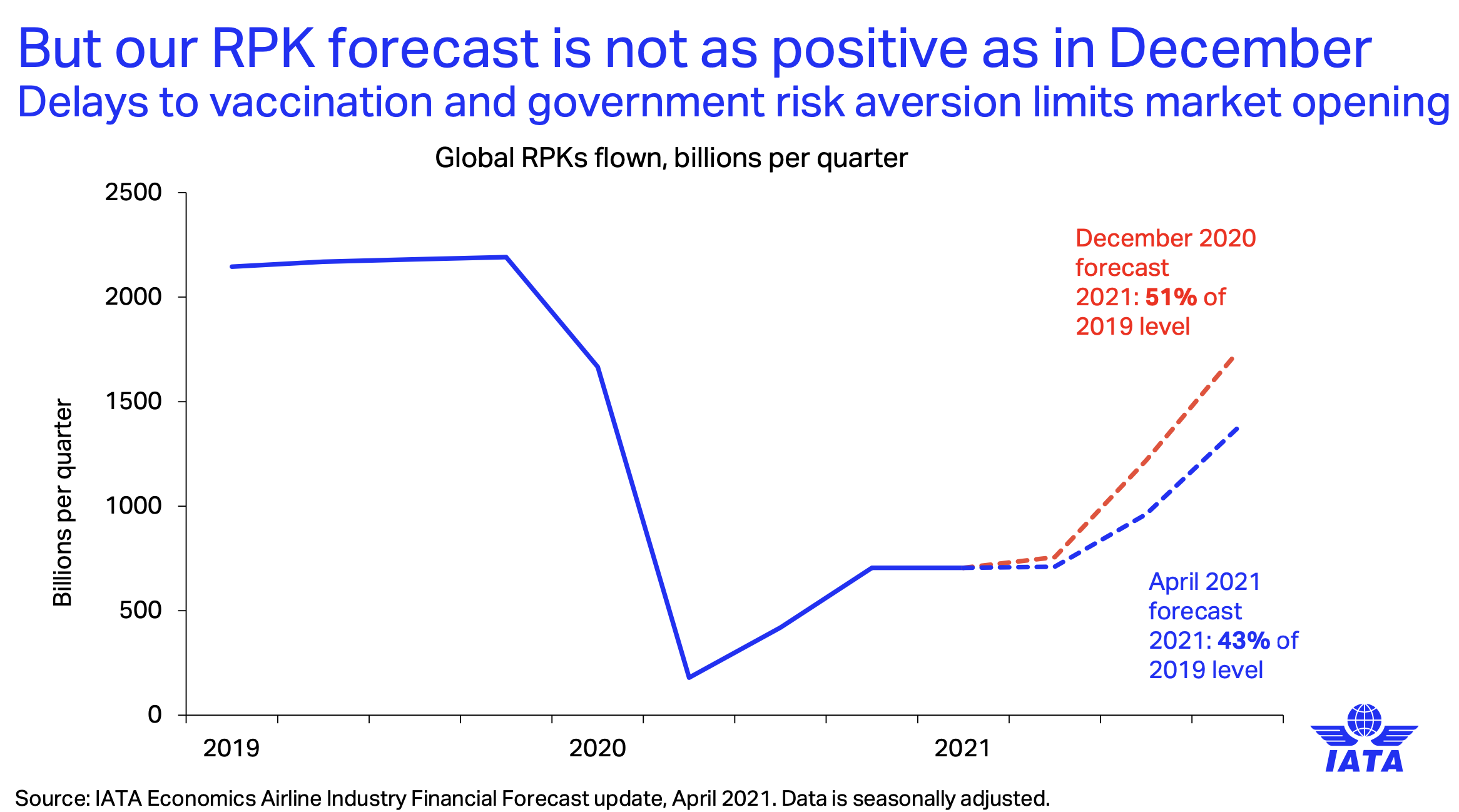
Industry Outlook
Demand: Travel restrictions, including quarantines, have “killed demand”. IATA estimates that travel (measured in revenue passenger kilometres or RPKs) will recover to 43% of 2019 levels over the year. While that is a 26% improvement on 2020, it is “far from a recovery”. Domestic markets will improve faster than international travel. Overall passenger numbers are expected to reach 2.4 billion in 2021. That is an improvement on the nearly 1.8 billion who travelled in 2020, but well below the 2019 peak of 4.5 billion.
- International passenger traffic remained -86.6% down on pre-crisis levels over the first two months of 2021. Vaccination progress in developed countries, particularly the US and Europe, is expected to combine with widespread testing capacity to enable a return to some international travel at scale in the second half of the year, reaching 34% of 2019 demand levels. 2021 and 2020 have opposite demand patterns: 2020 started strong and ended weak, while 2021 is starting weak and is expected to strengthen towards year-end. The result will be zero international growth when comparing the two years.
- Domestic passenger traffic is expected to perform significantly better than international markets. This is driven by strong GDP growth (+5.2%), accumulated consumer disposable cash during lockdowns, pent-up demand, and the absence of domestic travel restrictions. IATA estimates that domestic markets could recover to 96% of pre-crisis (2019) levels in the second half of 2021. That would be a 48% improvement on 2020 performance.
Revenues: Industry revenues are expected to total US$458 billion. That is 55% of the US$838 billion generated in 2019 but represents +23% growth on the US$372 billion generated in 2020.
Passenger revenues are expected to total US$231 billion, up from US$189 billion in 2020, but far below the US$607 billion generated in 2019.
Costs: Airlines have not been able to cut costs as fast as revenues have fallen, with IATA citing “worrying cost trends in fuel and infrastructure”.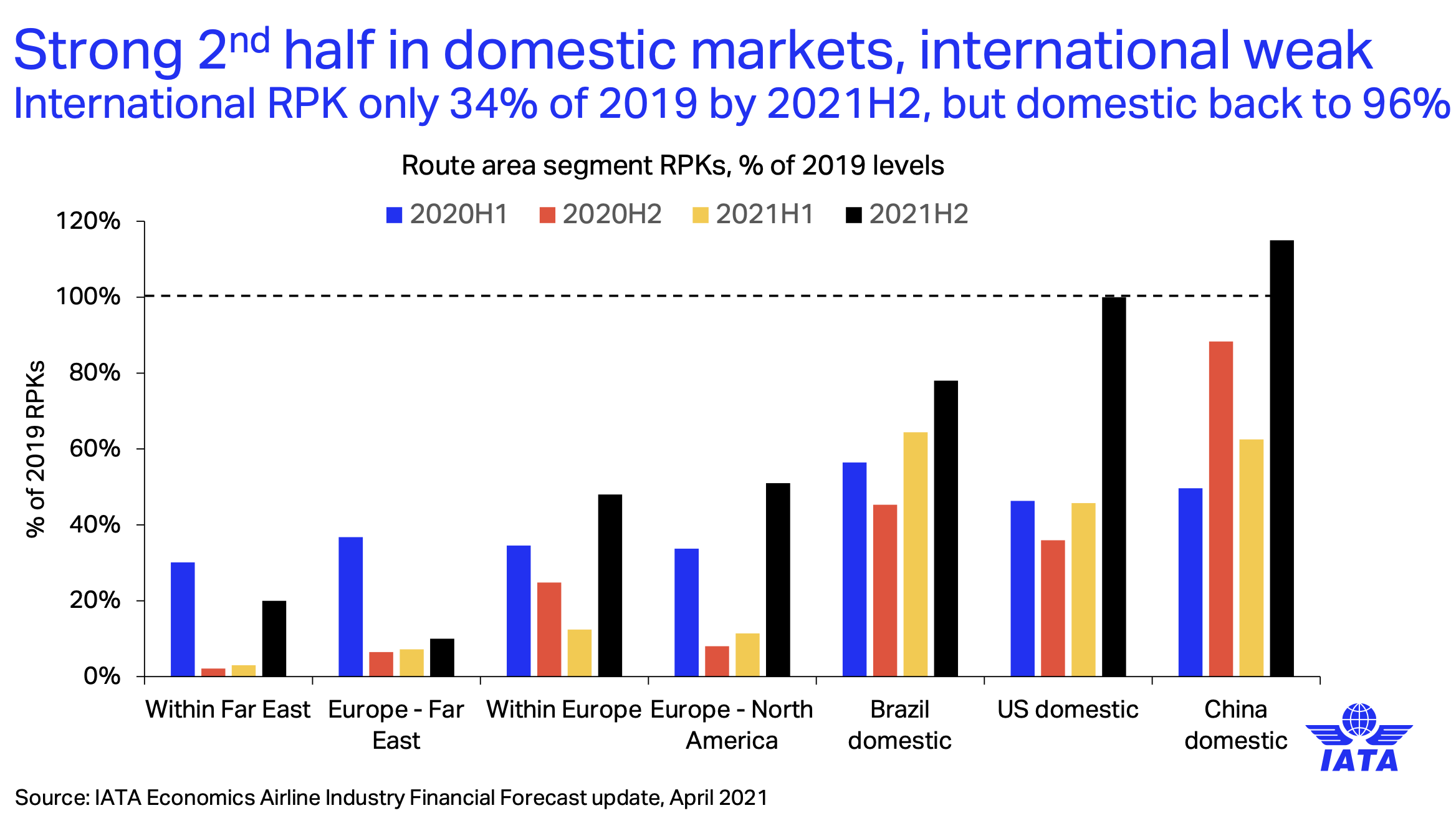
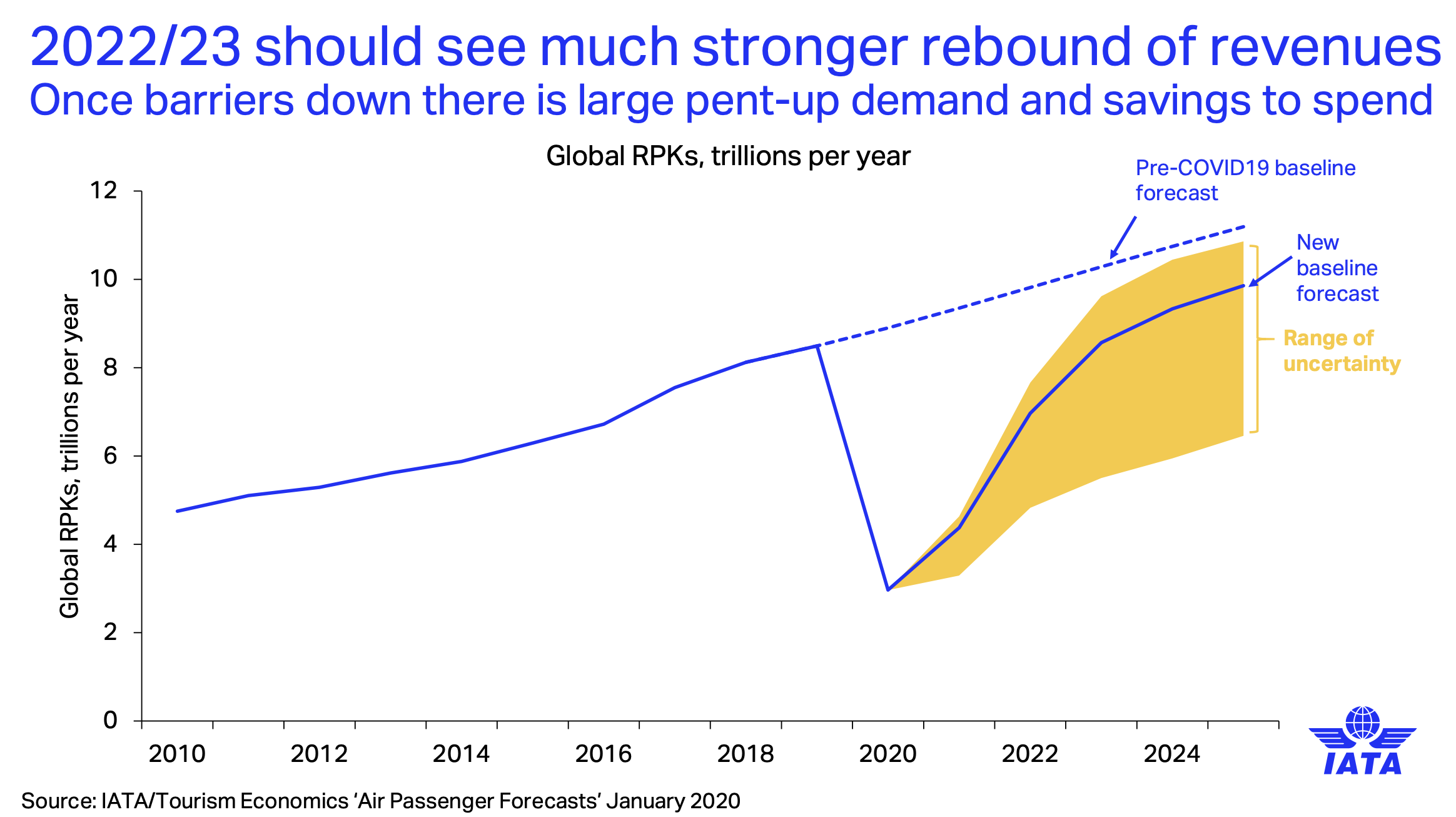
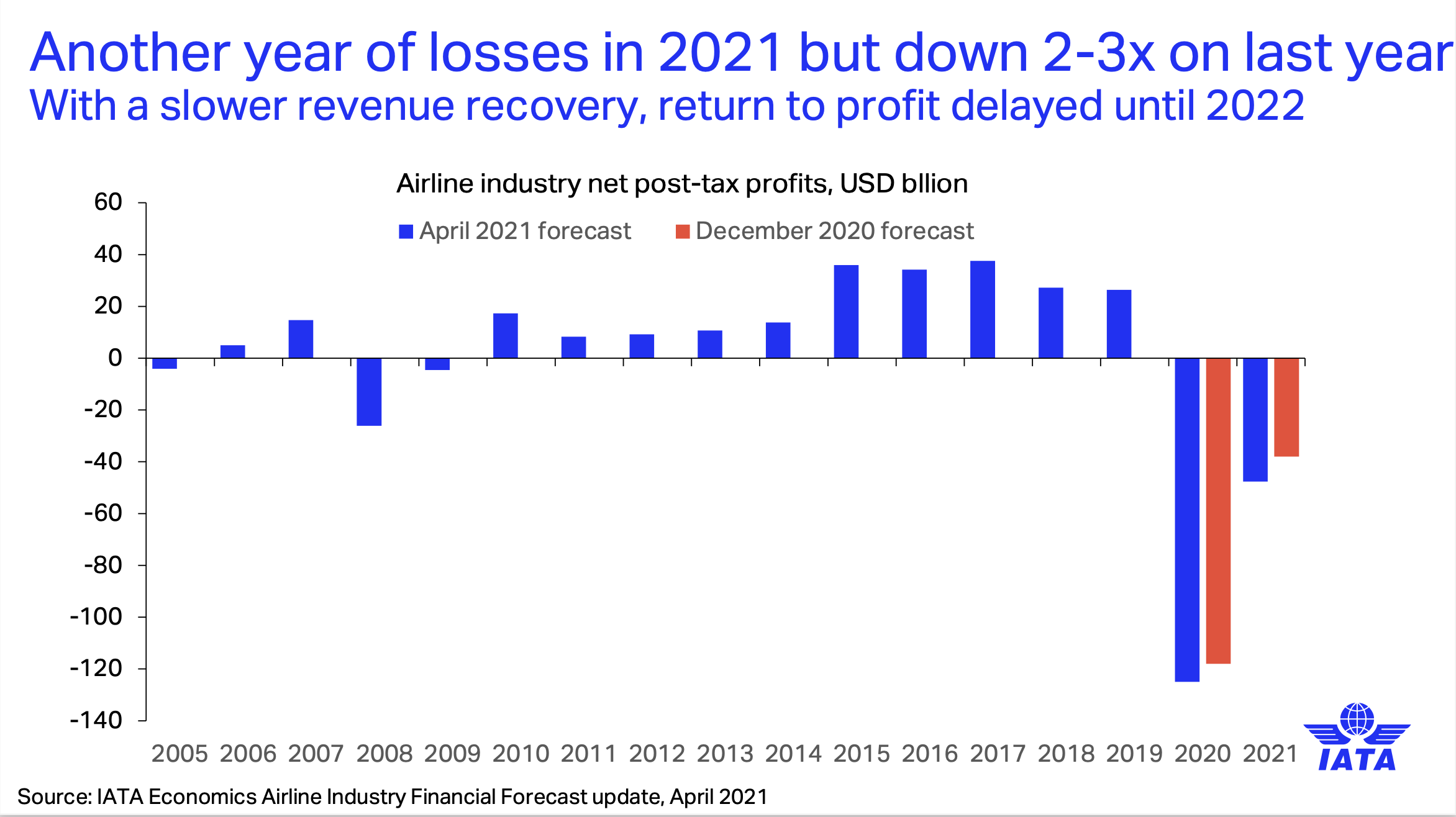 Significant differentiation is emerging between regions with large domestic markets and those relying primarily on international traffic. Losses are highest in Europe (-US$22.2 billion) with only 11% of its passenger traffic (RPK) being domestic. Proportionately, losses are much smaller in North America (-US$5.0 billion) and Asia-Pacific (-US$10.5 billion) where domestic markets are larger (66% and 45% respectively, pre-crisis).
Significant differentiation is emerging between regions with large domestic markets and those relying primarily on international traffic. Losses are highest in Europe (-US$22.2 billion) with only 11% of its passenger traffic (RPK) being domestic. Proportionately, losses are much smaller in North America (-US$5.0 billion) and Asia-Pacific (-US$10.5 billion) where domestic markets are larger (66% and 45% respectively, pre-crisis).
- North American carriers are best placed to take advantage of the rapid vaccination boost to domestic travel in the US, as well as the strong economy driving air cargo demand, said IATA. Losses are reduced to the lowest in any region at -2.7% of total revenues. In 2020 net losses were -26.8% of total revenues.
- European carriers are highly dependent on international passenger revenues, with domestic markets representing only 11% of RPKs. Along with testing, vaccines will play an important role in reopening international travel. Uneven vaccination rollout was already expected to limit the number of international markets opening this year. Slower vaccination in Europe will also restrict the recovery of the important within-Europe market and the North Atlantic. Net losses are expected to be reduced at the slowest rate among the major regions. The region’s carriers are expected to see net losses fall to -23.9% of revenues for 2021 (from -43% in 2020).
- Asia Pacific carriers see 45% of their RPKs generated on domestic markets and will benefit from the strength of the Chinese domestic market recovery, as well as the relative importance of air cargo to the region, noted IATA. Net losses are expected to be reduced from -31.1% of revenues in 2020 to -8.8% of revenues this year.
- Middle Eastern carriers will benefit from relatively rapid vaccination rates on home markets. They will be hampered, said IATA, by continued travel restrictions on many of the routes to emerging economies that are served through Gulf hub connections. Net losses in 2021 are forecast at -13.8% of revenues (reduced from -28.9% of revenues in 2020). It will be the third smallest regional loss.
- Latin American carriers are advantaged by having almost half (48%) of their RPKs being generated on domestic markets, in particular the large Brazilian home market. They are starting from relatively large losses in 2020 and, in some parts of the region, a slow rate of vaccination. Revenues from the growth in domestic travel are forecast to cut net losses by more than two-thirds this year—to -20.4% of revenues in 2021 from -80.1% in 2020.
- African carriers will see slow vaccination rates limit international travel. With only 14% of the region’s RPKs generated on domestic markets this will provide little cushion, noted IATA. Relatively weak economic growth will also limit the extent of pent-up demand. Net losses are expected to fall this year, from -32% of revenues in 2020 to -24%.










